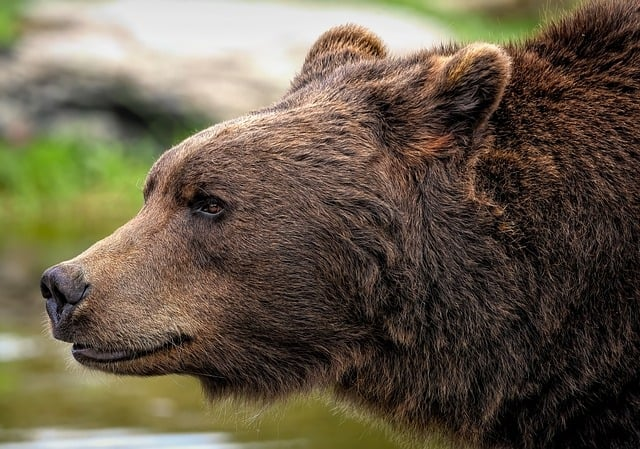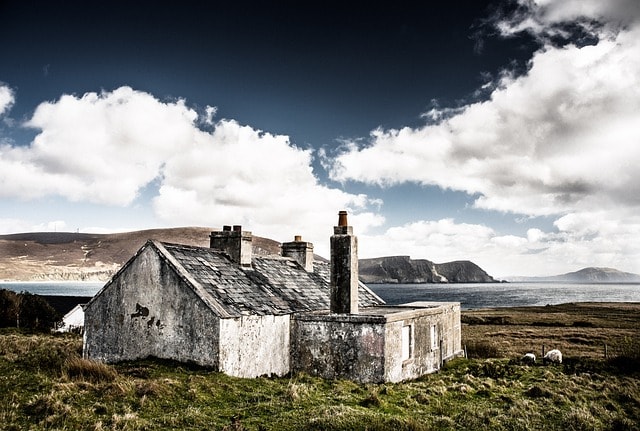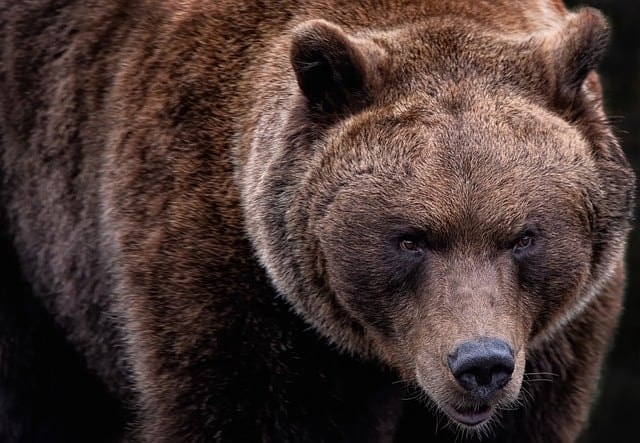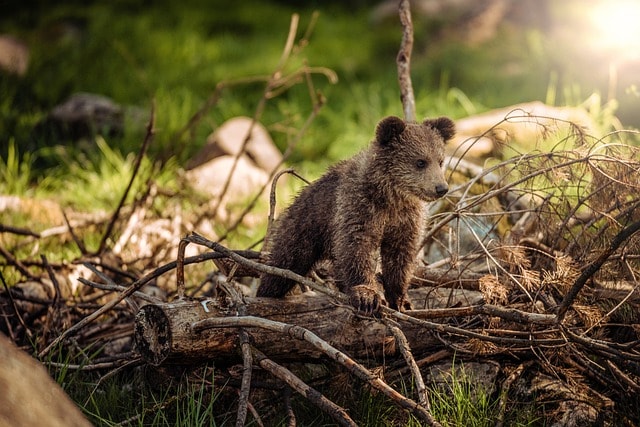No, there are no wild bears currently in Ireland. Bears once roamed the island thousands of years ago during prehistoric times, specifically the three brown bears the bear species. However, they became extinct due to a combination of factors including climate change, human hunting, and habitat loss. Despite Ireland's rich wildlife, bears are no longer part of its ecosystem, and there are no plans to reintroduce them. Visitors to Ireland can enjoy a diverse range of other wildlife, but they won't encounter any bears in the wild.

Did Bears Ever Live in Ireland?
Yes, bears did once live in Ireland. In fact, Ireland was home to a species known as the brown bear (Ursus arctos) during prehistoric times. Fossil evidence suggests that brown bears were widespread across the island thousands of years ago, during the last Ice Age.
Bears first arrived in Ireland around 12,000 years ago, following the end of the last Ice Age. As the ice sheets retreated, they left behind a landscape that was rich in resources, making it an ideal habitat for large mammals like bears. The brown bear, in particular, thrived in the woodlands and mountainous regions of Ireland.
What is the Evidence Behind Bears' Presence?
The presence of bears in ancient Ireland is supported by numerous fossil discoveries early modern period. Bear bones and teeth have been unearthed in various parts of the country, including County Clare and County Cork. These fossils date back to the Pleistocene epoch, which lasted from about 2.6 million years ago to 11,700 years ago.
One of the most significant discoveries was made in 2017 when scientists found evidence of a brown bear's knee bone in a cave in County Clare. This bone showed marks consistent with human activity, indicating that early humans in Ireland interacted with and possibly hunted bears.
Bears also played a role in Irish mythology and folklore. In ancient Celtic culture, bears were revered as powerful and noble creatures, often associated with strength and warrior qualities. The bear was seen as a symbol of protection and was sometimes linked to the Celtic goddess Artio, who was worshipped by the Gauls and other Celtic tribes.

Why Did Bears Go Extinct in Ireland?
The extinction of bears in Ireland was the result of a combination of factors, including climate change, human activity, and loss of habitat. Understanding these factors provides insight into the broader environmental changes that occurred in Ireland over thousands of years.
Climate Change
One of the primary factors contributing to the extinction of bears in Ireland was climate change. As the climate warmed after the last Ice Age, Ireland's landscape began to change significantly. The dense forests and woodlands that once provided an ideal habitat for bears started to diminish, replaced by open grasslands and more temperate environments.
Changing Landscape
As Ireland's climate shifted, the changing landscape reduced the availability of suitable habitats for bears. The dense woodlands that provided shelter and food sources for bears began to disappear, making it increasingly difficult for them to survive.
Food Sources
Climate change also impacted the availability of food sources for bears. As the environment shifted, many of the plants and animals that bears relied on for sustenance became scarce or disappeared altogether. This reduction in food availability made it harder for bears to find the necessary resources to survive.
Human Activity
Human activity played a significant role in the extinction of bears in Ireland. As human populations grew and expanded across the island, they began to alter the landscape in ways that were detrimental to bear populations.
Hunting and Overexploitation
One of the most direct impacts humans had on bears was through hunting. Early humans in Ireland hunted bears for their meat, fur, and bones, which were used for tools and clothing. Over time, this hunting pressure, combined with other factors, led to a decline in bear populations.
Habitat Destruction
As human settlements expanded, large areas of forest were cleared for agriculture and construction. This deforestation not only reduced the available habitat for bears but also fragmented the remaining forest areas, making it more difficult for bears to find food and shelter.
Loss of Habitat
The loss of habitat was another critical factor in the extinction of bears in Ireland. As the landscape changed and human activities increased, the amount of suitable habitat for bears continued to decrease, eventually leading to their extinction.
Deforestation and Land Use
Deforestation was a significant driver of habitat loss in Ireland. As humans cleared forests for agriculture and settlements, the dense woodlands that bears depended on for survival were destroyed. This loss of habitat made it increasingly difficult for bears to find food, shelter, and mates.
Fragmentation of Habitat
In addition to outright habitat loss, the fragmentation of remaining forest areas further contributed to the decline of bear populations. As forests were divided into smaller, isolated patches, bears found it increasingly difficult to navigate the landscape and access the resources they needed to survive.
Competition with Humans
As human populations grew and expanded, bears faced increased competition for food and resources. This competition, combined with the loss of habitat and hunting pressure, eventually led to the extinction of bears in Ireland.

How Did the Extinction of Bears Affect Ireland's Ecosystem?
The extinction of bears in Ireland had significant implications for the island's ecosystem. Bears are considered keystone species, meaning their presence has a disproportionately large impact on the environment and other species.
Impact on Prey Populations
Bears are omnivores, meaning they eat both plant and animal matter. In ecosystems where bears are present, they play a crucial role in controlling the populations of their prey, such wild animals such as deer and small mammals. With the extinction of bears in Ireland, there was likely an increase in the populations of these animals, which could have led to overgrazing and other ecological imbalances.
Changes in Vegetation
Bears also impact vegetation through their foraging behavior. By eating plants, fruits, and berries, bears help to disperse seeds and promote plant growth. The loss of bears in Ireland may have led to changes in the composition of plant species and the structure of forests and other habitats.
Disruption of Food Chains
As a top predator and scavenger, bears occupy an essential position in the food chain. Their extinction likely caused disruptions in the food chain, affecting not only their prey but also other species that rely on the same resources. This disruption could have had cascading effects throughout the ecosystem, altering the dynamics of species interactions and ecosystem processes.
Influence on Human Communities
The extinction of bears in Ireland also impacted human communities. Bears were once an important resource for early humans, providing food, clothing, and tools. Their extinction likely forced human populations to adapt and find new resources to meet their needs.

Can Bears Be Reintroduced to Ireland?
The idea of reintroducing bears to Ireland has been a topic of discussion among conservationists and wildlife enthusiasts. While reintroducing bears could potentially restore some of the ecological balance lost with their extinction, there are significant challenges and considerations to take into account.
Ecological Feasibility
One of the primary considerations for reintroducing bears to Ireland is the ecological feasibility of such a project. While bears were once native to Ireland, the landscape and environment have changed significantly since their extinction. Reintroducing bears would require careful assessment of the available habitat, food sources, and the potential impact of captive bears on other species.
Habitat Availability
For bears to survive and thrive in Ireland, there must be sufficient suitable habitat available. Given the current levels of deforestation and land use in Ireland, finding enough contiguous forested areas to support a viable bear population could be challenging. Habitat restoration and conservation efforts would likely be necessary to create the conditions needed for bears to return.
Human-Wildlife Conflict
Another significant challenge to reintroducing bears to Ireland is the potential for human-wildlife conflict. Bears are large, powerful animals that can pose a threat to livestock and, in rare cases, humans. Ensuring that bears and human communities can coexist peacefully would require extensive planning, education, and management strategies.
Legal and Regulatory Considerations
Reintroducing bears to Ireland would also involve navigating legal and regulatory frameworks. Wildlife reintroduction projects are subject to strict regulations and require the approval of government authorities. Additionally, public support and stakeholder engagement would be crucial for the success of any such cave bear reintroduction effort.
Potential Benefits
Despite the challenges, there are potential benefits to reintroducing bears to Ireland. As a keystone species, bears could help restore ecological balance and promote biodiversity. Their presence could also provide opportunities for ecotourism and education, raising awareness of conservation issues and generating economic benefits for local communities.
What Wildlife Exists in Ireland?
Bears are no longer part of Ireland's wildlife, but Ireland is home to a diverse array of species that thrive in its unique habitats. From mammals to birds, Ireland's wildlife reflects the country's rich natural heritage.
Native Mammals
Ireland is home to several native mammal species, including the red fox, badger, pine marten, and Irish hare. These mammals are well-adapted to the Irish landscape and play important roles in the ecosystem.
-
Red Fox: The red fox is one of Ireland's most common mammals and can be found in both rural and urban areas. Foxes are opportunistic feeders and play a role in controlling the populations of small mammals and birds.
-
Badger: The badger is a nocturnal mammal that lives in underground burrows known as setts. Badgers are social animals and play a role in aerating the soil through their digging activities.
-
Pine Marten: The pine marten is a tree-dwelling carnivore that is native to Ireland. Pine martens are elusive and primarily feed on small mammals, birds, and fruits.
-
Irish Hare: The Irish hare is a subspecies of the mountain hare and is native to Ireland. It is well-adapted to the island's varied habitats and is known for its speed and agility.
Birds
Ireland is a haven for birdwatchers, with a wide variety of bird species found across the island. Some of the most notable bird species include the peregrine falcon, barn owl, puffin, and whooper swan.
-
Peregrine Falcon: The peregrine falcon is one of the fastest birds in the world and is known for its impressive hunting skills. It can be found in various habitats across Ireland, including cliffs, mountains, and urban areas.
-
Barn Owl: The barn owl is a nocturnal bird of prey that is often associated with folklore and mythology. Barn owls are skilled hunters and feed primarily on small mammals.
-
Puffin: Puffins are seabirds known for their distinctive beaks and colorful plumage. They are found along Ireland's coastal cliffs, particularly on the Skellig Islands.
-
Whooper Swan: The whooper swan is a migratory bird that spends the winter months in Ireland. These large, graceful birds are often seen on lakes and wetlands.
Marine Life
Ireland's coastal waters are home to a diverse range of marine life, including seals, dolphins, and various species of fish.
-
Common Seal: The common seal is one of two seal species found in Ireland. These seals are often seen basking on rocks along the coast and are known for their playful behavior.
-
Bottlenose Dolphin: Bottlenose dolphins are frequently spotted off the coast of Ireland, particularly in the waters around Dingle Bay. These intelligent and social animals are a popular attraction for wildlife enthusiasts.
-
Atlantic Salmon: The Atlantic salmon is a migratory fish species that is native to Irish rivers. Salmon are known for their remarkable journey from the ocean to freshwater rivers to spawn.
Reptiles and Amphibians
Ireland has a limited number of reptile and amphibian species, but those that are present are well-adapted to the island's climate.
-
Common Lizard: The common lizard is Ireland's only native reptile species. It is typically found in heathlands, bogs, and coastal areas.
-
Smooth Newt: The smooth newt is one of Ireland's few amphibian species. Newts are typically found in ponds, lakes, and slow-moving streams.
Insects and Invertebrates
Ireland is home to a wide variety of insects and invertebrates, including butterflies, bees, and beetles. These species play crucial roles in pollination, decomposition, and maintaining the balance of ecosystems.
-
Peacock Butterfly: The peacock butterfly is one of Ireland's most colorful and recognizable butterfly species. It is commonly found in gardens, woodlands, and meadows.
-
Honeybee: Honeybees are essential pollinators and are found throughout Ireland. They play a critical role in the pollination of crops and wildflowers.
-
Stag Beetle: The stag beetle is one of Ireland's largest beetle species. It is typically found in woodland areas and is known for its distinctive mandibles.
FAQs On Are There Bears in Ireland?
Were there ever bears in Ireland?
Yes, bears once lived in Ireland during prehistoric times. Fossil evidence suggests that brown bears roamed the island around 12,000 years ago, following the end of the last Ice Age. However, they became extinct due to a combination of climate change, human activity, and habitat loss.
Why did bears go extinct in Ireland?
Bears went extinct in Ireland due to several factors, including climate change, which altered their habitats, human activity such as hunting and deforestation, and the resulting loss of suitable habitats for bears to survive.
Can bears be reintroduced to Ireland?
Reintroducing bears to Ireland would face significant challenges, including habitat availability, potential human-wildlife conflict, and ecological feasibility. While it is theoretically possible, it would require careful planning, conservation efforts, and public support.
What wildlife currently exists in Ireland?
Ireland is home to a diverse range of wildlife, including mammals like red foxes and badgers, birds like peregrine falcons and puffins, marine life like common seals and bottlenose dolphins, and various reptiles, amphibians, insects, and invertebrates.
How did the extinction of bears affect Ireland's ecosystem?
The extinction of bears in Ireland likely caused disruptions in the ecosystem, including changes in prey populations, vegetation, and food chains. Bears are considered keystone species, meaning their absence would have had a significant impact on the balance of the ecosystem.
